Unlock Efficient Shredding for Solid Waste
In the realm of industrial production and waste resource recovery, shredding operations serve as a critical foundation, directly influencing the efficiency of downstream processes and the overall economic viability of a project.
Since Harden Machinery introduced its one-step single-shaft shredder, it has gained widespread acclaim for its ability to process materials in a single pass, delivering consistent, qualified particle sizes.
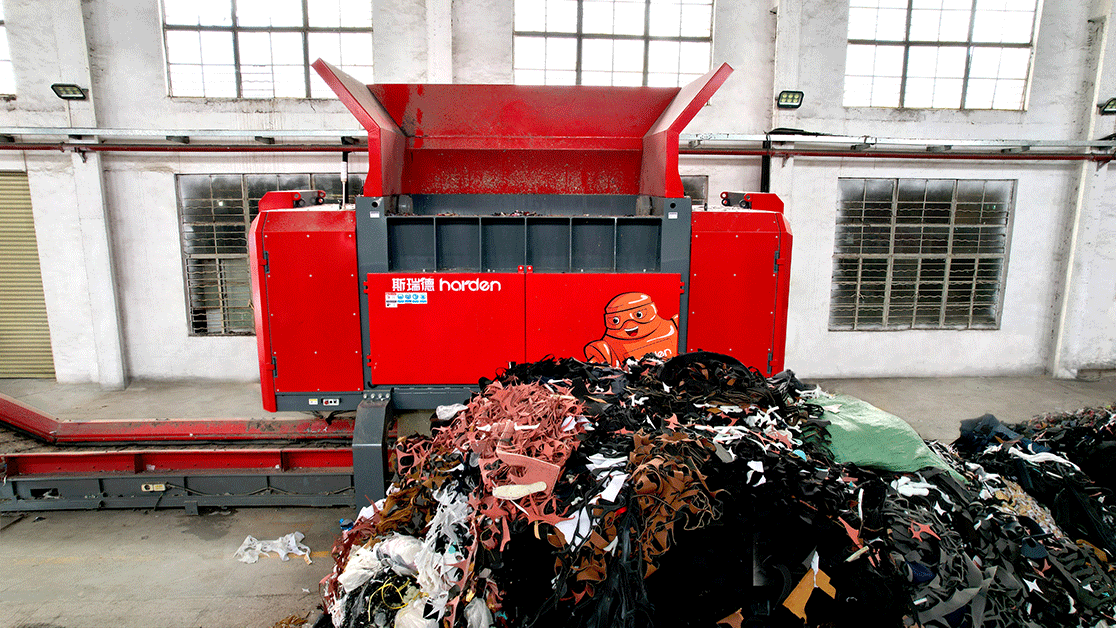
But how does it differ from traditional single-shaft shredders, and how does it perform across diverse project scenarios? More importantly, how can you select the ideal shredding solution tailored to your specific needs? Let's explore by assessing waste properties and project scenarios.
Key Considerations: Understanding Waste Characteristics
The success of any RDF (Refuse-Derived Fuel) production or solid waste resource recovery project hinges on the properties of the input waste. These include hardness, flexibility, physical dimensions, contamination levels, and moisture content—factors that dictate the appropriate shredding approach.
Solution 1: Processing Relatively Pure Feedstocks
For an RDF plant handling relatively clean feedstocks—such as industrial waste, waste textiles, waste plastics, bulky waste, paper mill rejects, oversize fractions from municipal solid waste (MSW), biomass, and tires—where contamination is minimal and fine shredding is the primary goal, a streamlined solution suffices.
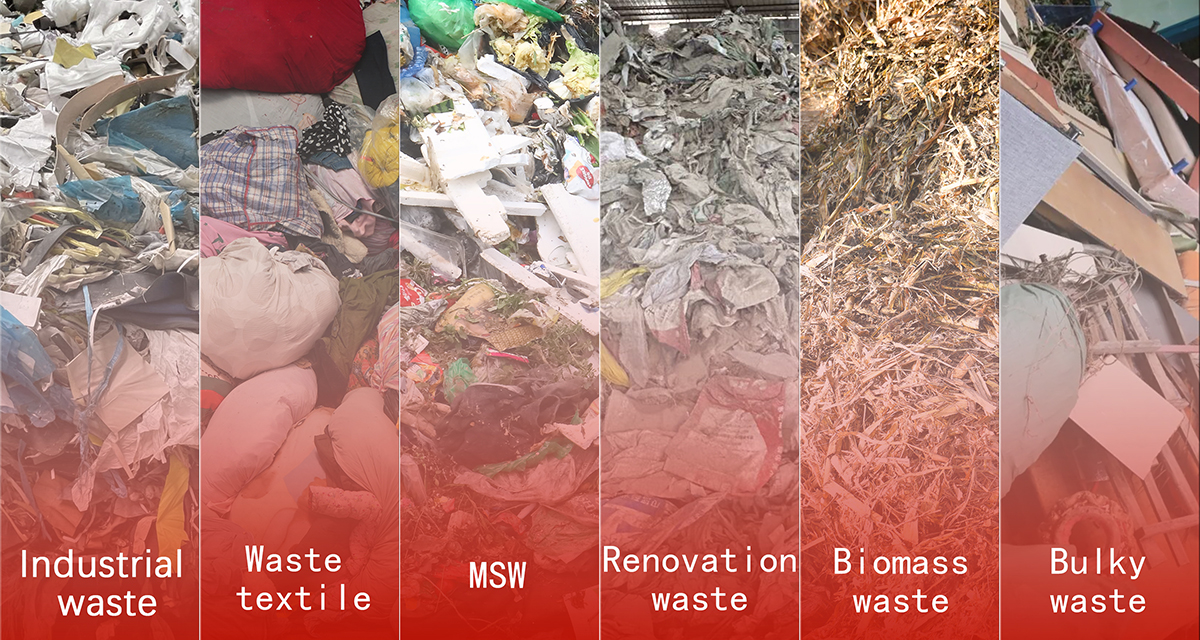
Harden's one-step shredding system, featuring a single-shaft shredder, a conveyor with fire suppression, a magnetic separator, and a grab crane for feeding, occupies just 105 square meters.
This compact setup delivers RDF fuel particles sized 40-130 mm, ready for use in cement kilns or other furnaces as a coal substitute.
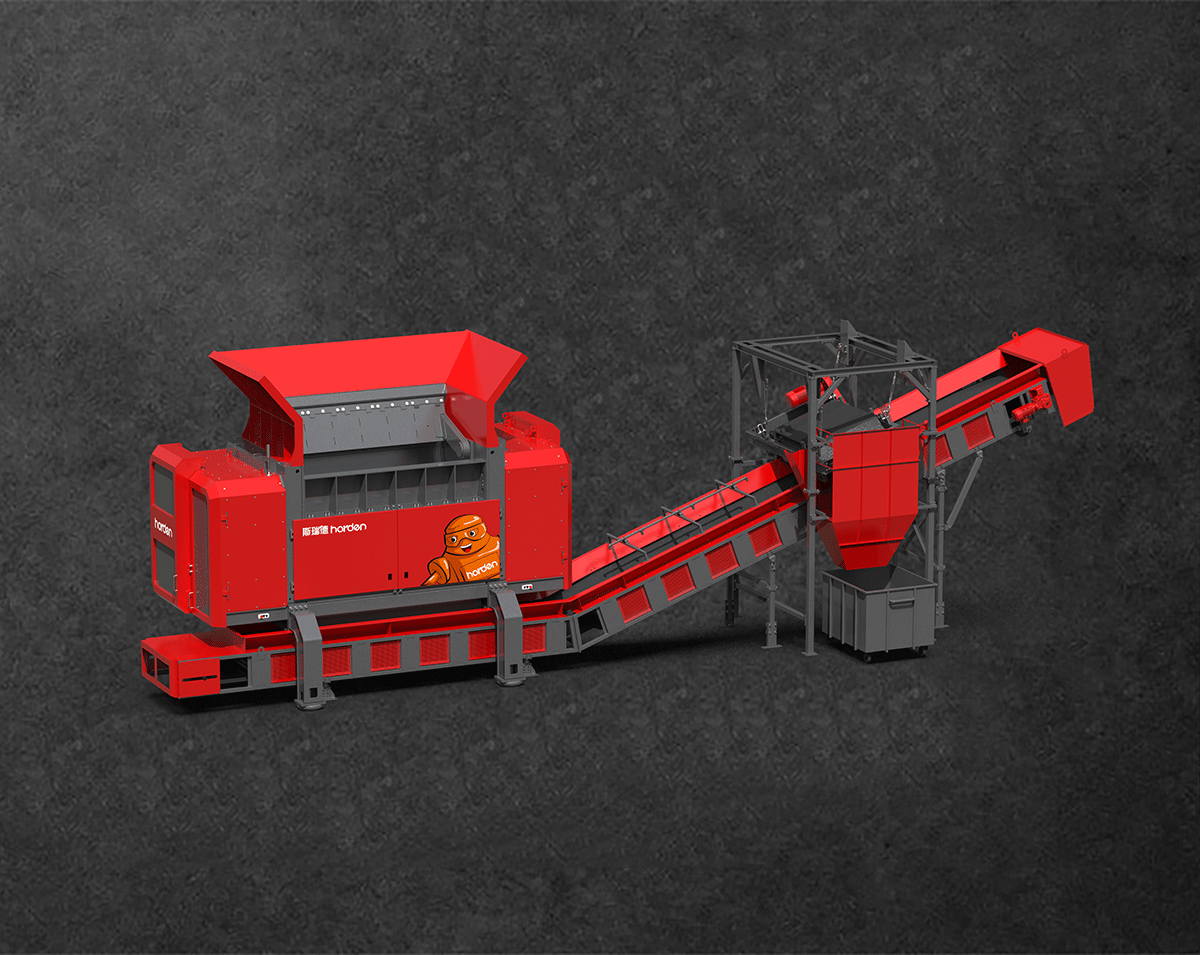
The system's precision cutting mechanism boosts shredding efficiency by 28%, adeptly handling flexible materials while preventing blade entanglement and reducing maintenance downtime.
Its variable frequency drive optimizes energy use, cutting power consumption by approximately 30% per ton compared to multi-stage shredding systems, significantly lowering long-term operational costs.
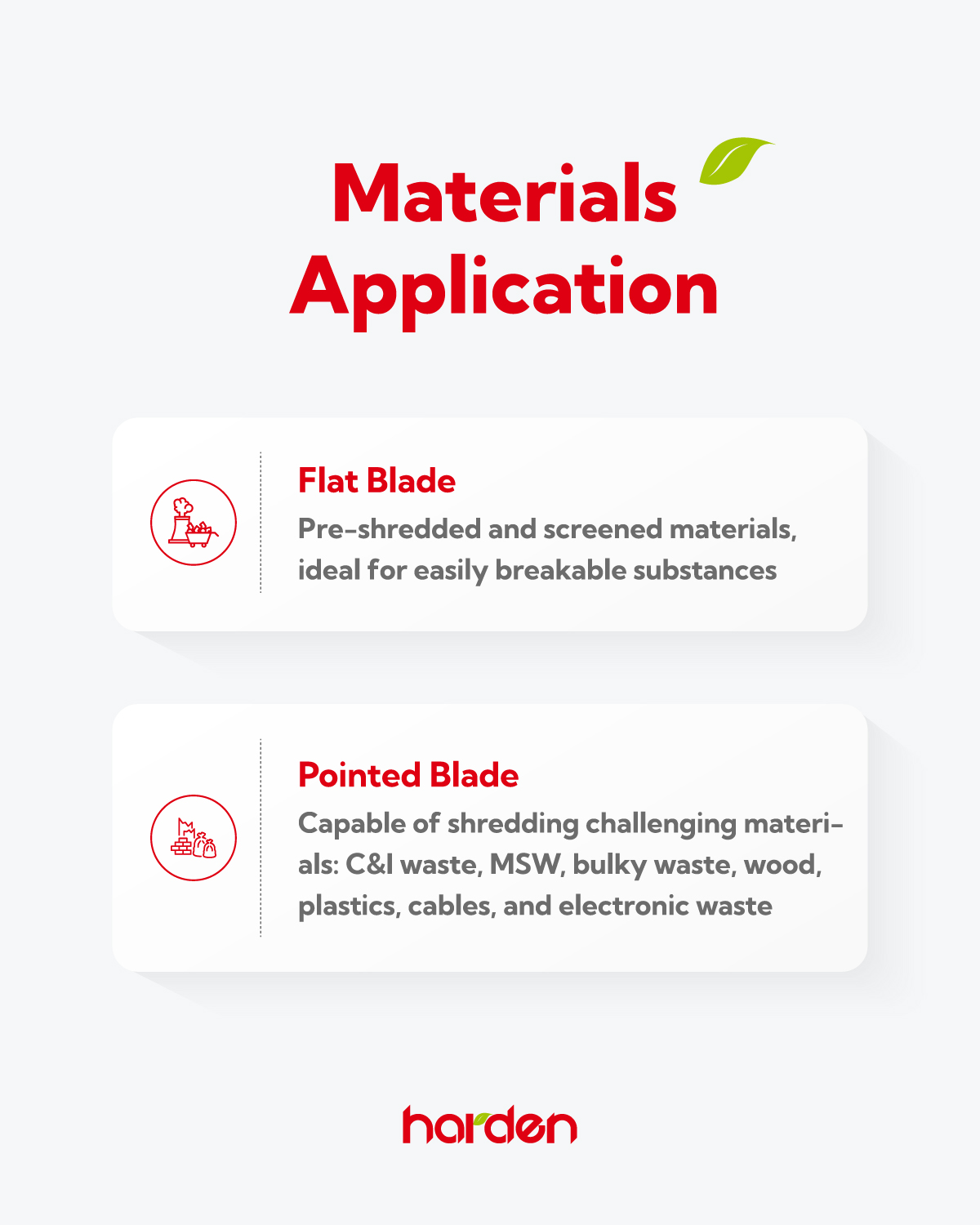

Solution 2: Tackling Complex Mixed Waste
For more challenging feedstocks—such as MSW, construction debris, complex industrial waste, aged refuse, or garden wood biomass—where metals, glass, and soil are intermixed, direct shredding poses risks.
Unprocessed contaminants can accelerate equipment wear, increase maintenance expenses, and compromise the purity of the output, potentially harming cement kilns or thermal power boilers. Here, a comprehensive pre-treatment and sorting approach is essential.
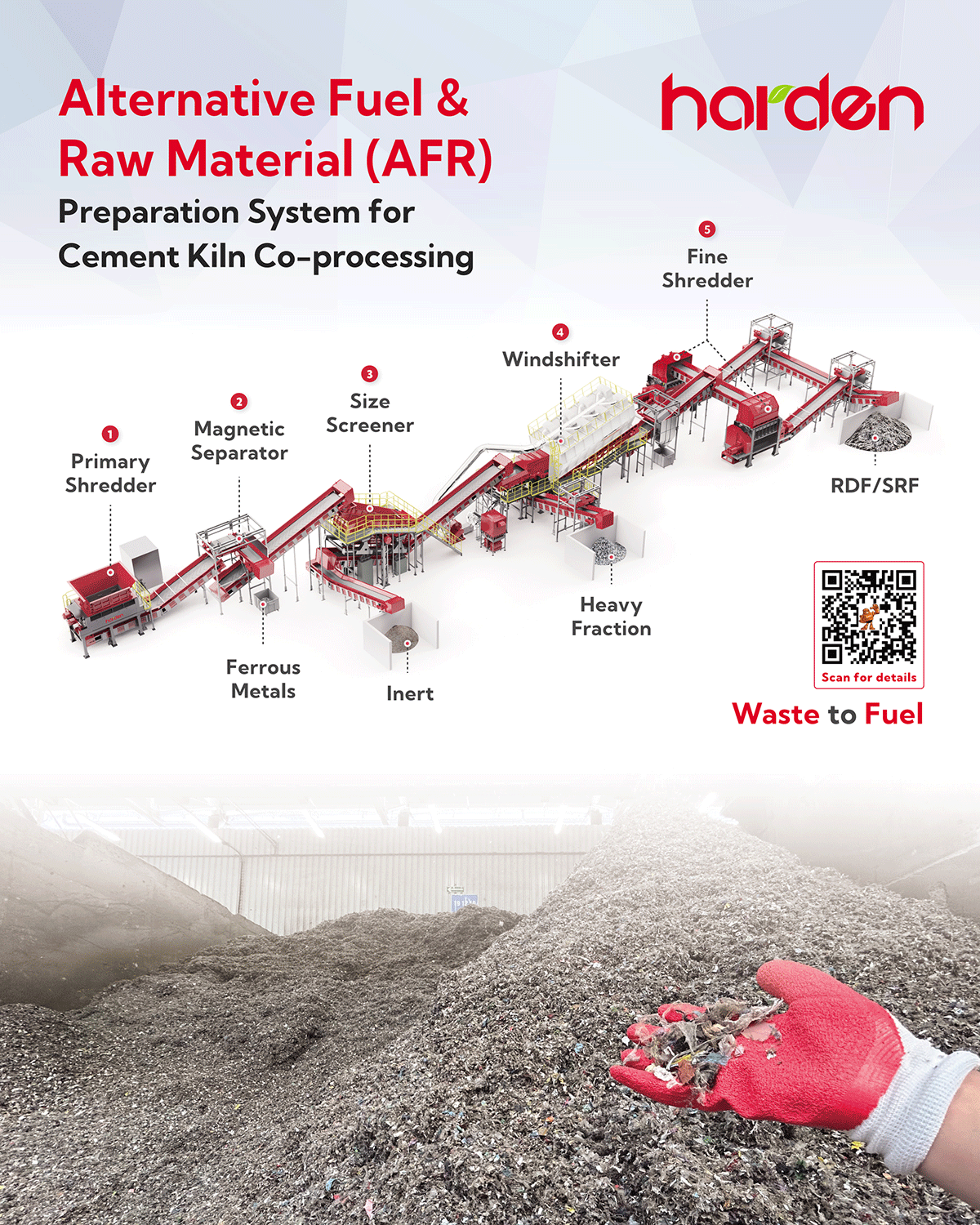
Harden's DSWS integrated shredding solution addresses this with a “coarse shredding + magnetic separation + air classification + fine shredding” process. Materials first undergo magnetic separation to remove metal impurities, followed by air classification to isolate lightweight fractions like textiles and plastics.
The final stage employs a single-shaft shredder for fine processing. The resulting RDF fuel features uniform particle sizes below 30 mm, reduced impurity levels (e.g., chlorine and sulfur), and enhanced combustion efficiency. This improves thermal substitution rates in cement kilns while minimizing impacts on operational stability and product quality.
This versatile system handles over 90% of market-available waste types, enabling co-transport of diverse feedstocks and alleviating RDF plant concerns about raw material shortages. By leveraging locally abundant waste, transportation costs can be halved, a key advantage of the DSWS approach.
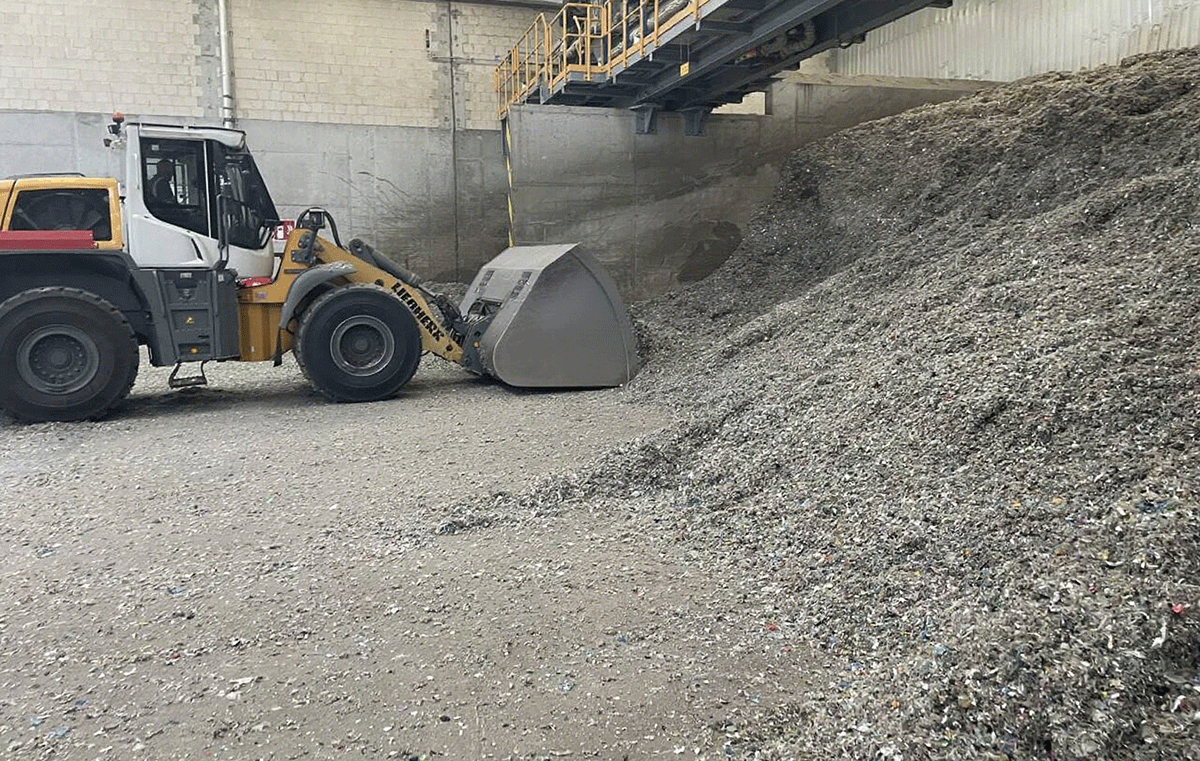
Prioritizing Reliability for Continuous Operation
Continuous operation is the lifeblood of an RDF plant's profitability. For extended runtimes, equipment stability and reliability are paramount. Harden's single-shaft shredders are engineered with the total cost of ownership (TCO) in mind, balancing shredding performance with reduced maintenance and blade replacement costs. This design alleviates operational burdens, ensuring consistent output and long-term savings.
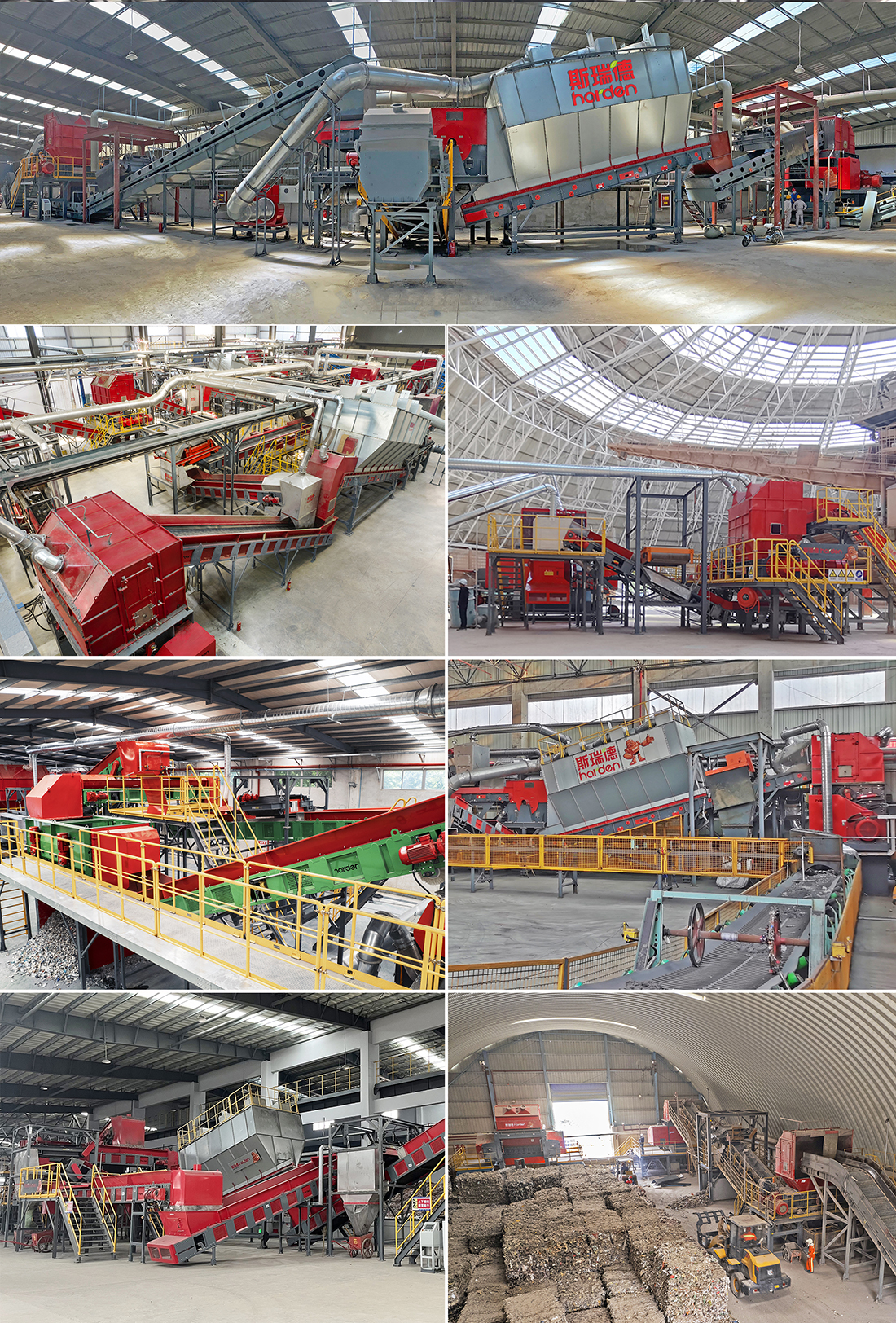
Making the Right Choice
Selecting the optimal shredding solution is no simple task. It requires a holistic evaluation of waste characteristics, production requirements, equipment performance, budget constraints, and manufacturer support.
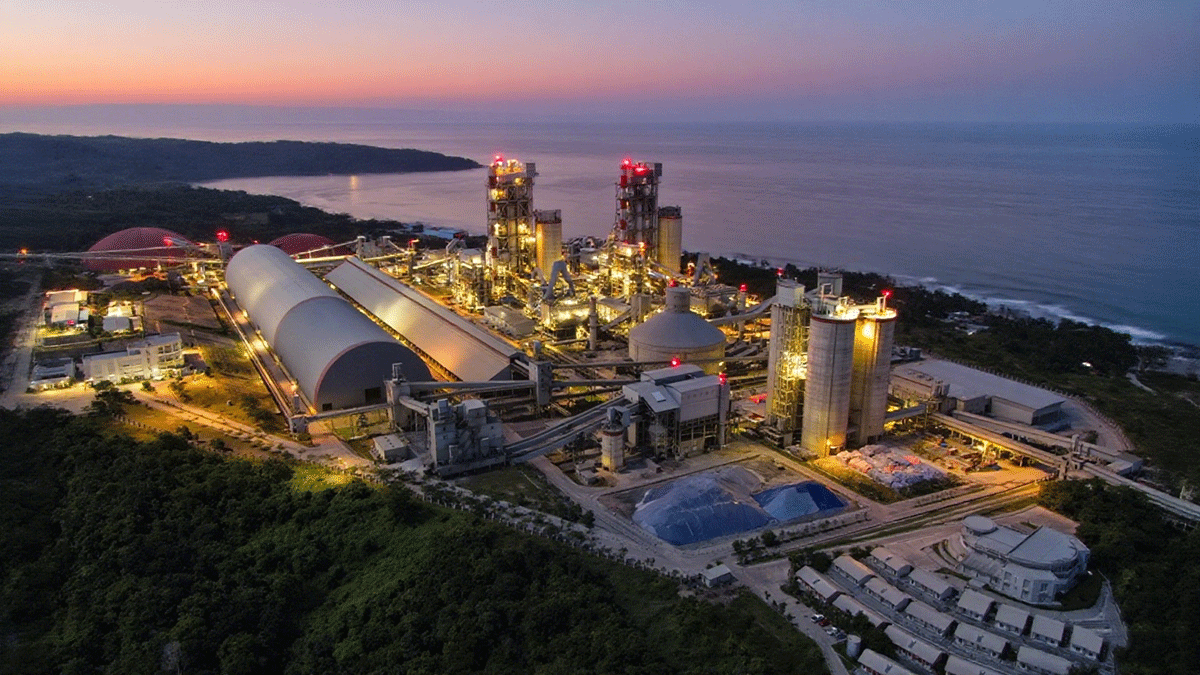
By thoroughly assessing your needs and comparing market offerings, you can identify a solution that drives cost efficiency and green production goals. Harden's single-shaft shredders lay a robust foundation for solid waste resource utilization, empowering businesses to thrive in this critical sector.

